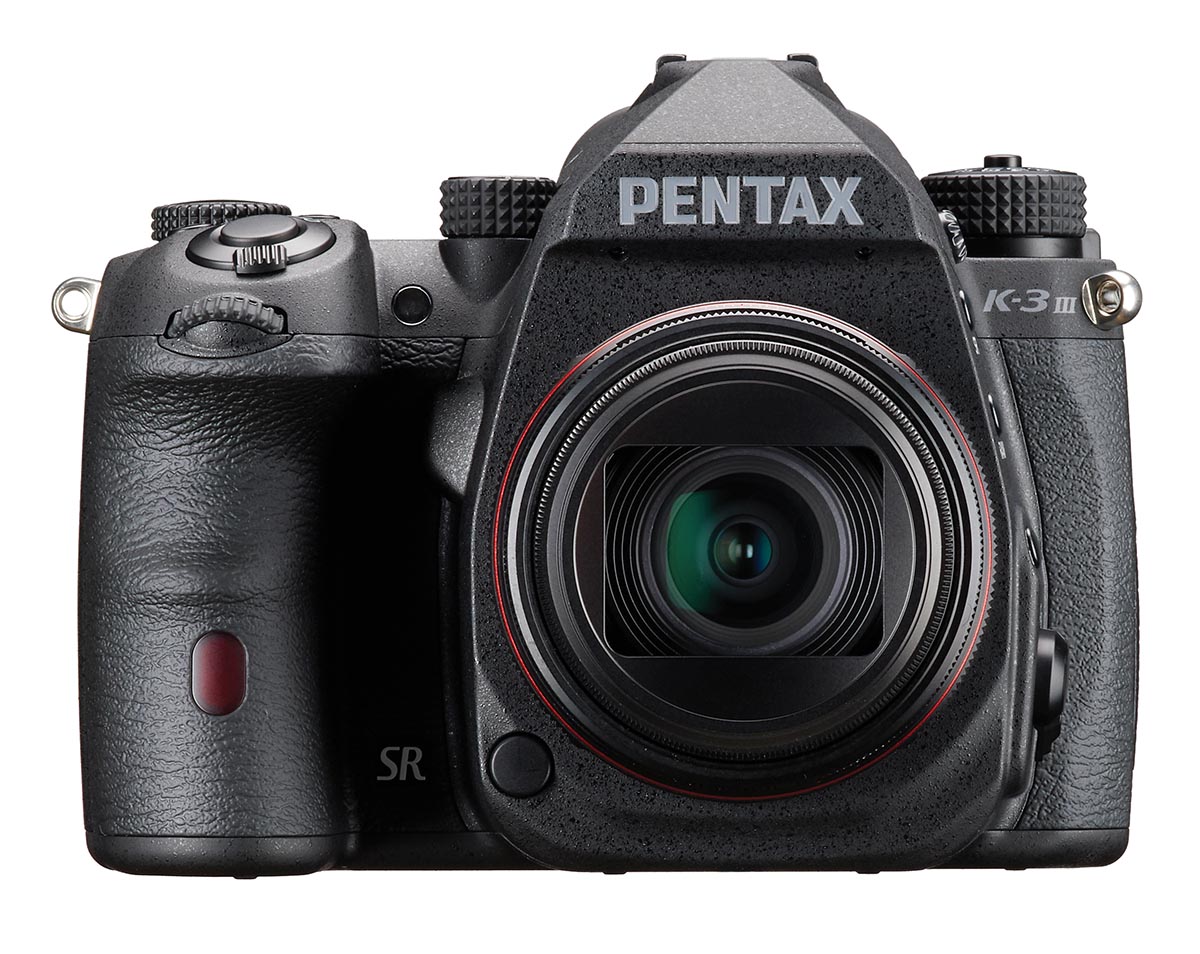
It’s an interesting take for a modern camera: having a sensor designed to capture solely in black-and-white. The Pentax K-3 Mark III Monochrome camera from Ricoh Imaging offers this option in a DSLR body with a 25.7-megapixel APS-C CMOS sensor. It opens opportunities for photographers seeking exceptional image quality in a creative niche.
With a monochrome sensor, there’s no color filter array. High ISO captures are free from the type of chroma noise that comes with RGB, and noise itself appears to a far lesser degree than it does with color sensors at the same ISO. And without a CFA filter, you simply get a cleaner, sharper image. Additionally, without the interpolation required by a CFA filter, the sensor captures and records all of the light. In short, you get a more crisp, detailed image with creamier gradients compared to an equivalent color capture that’s converted to monochrome.
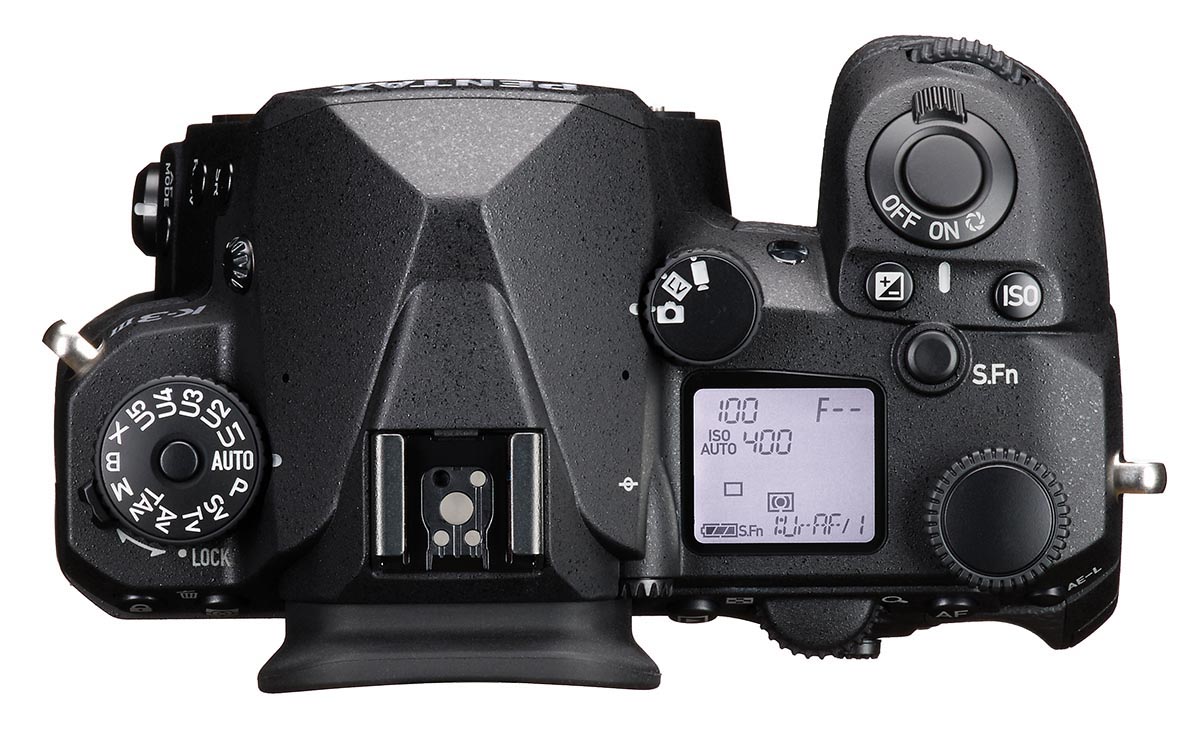
The top deck of the Pentax K-3 Mark III Monochrome
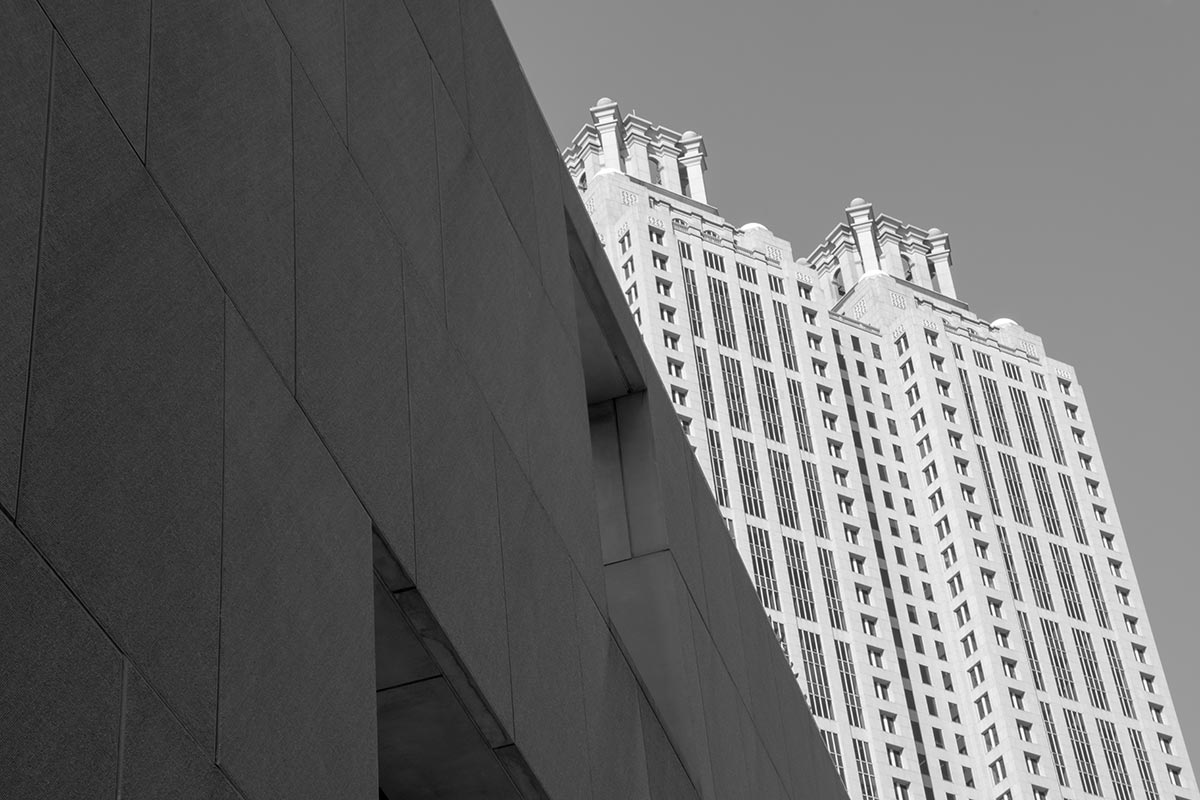
Exposure: 1/250 second, f/16, ISO 400 and EV -1 with some values edited in Lightroom to open shadows in the foreground.
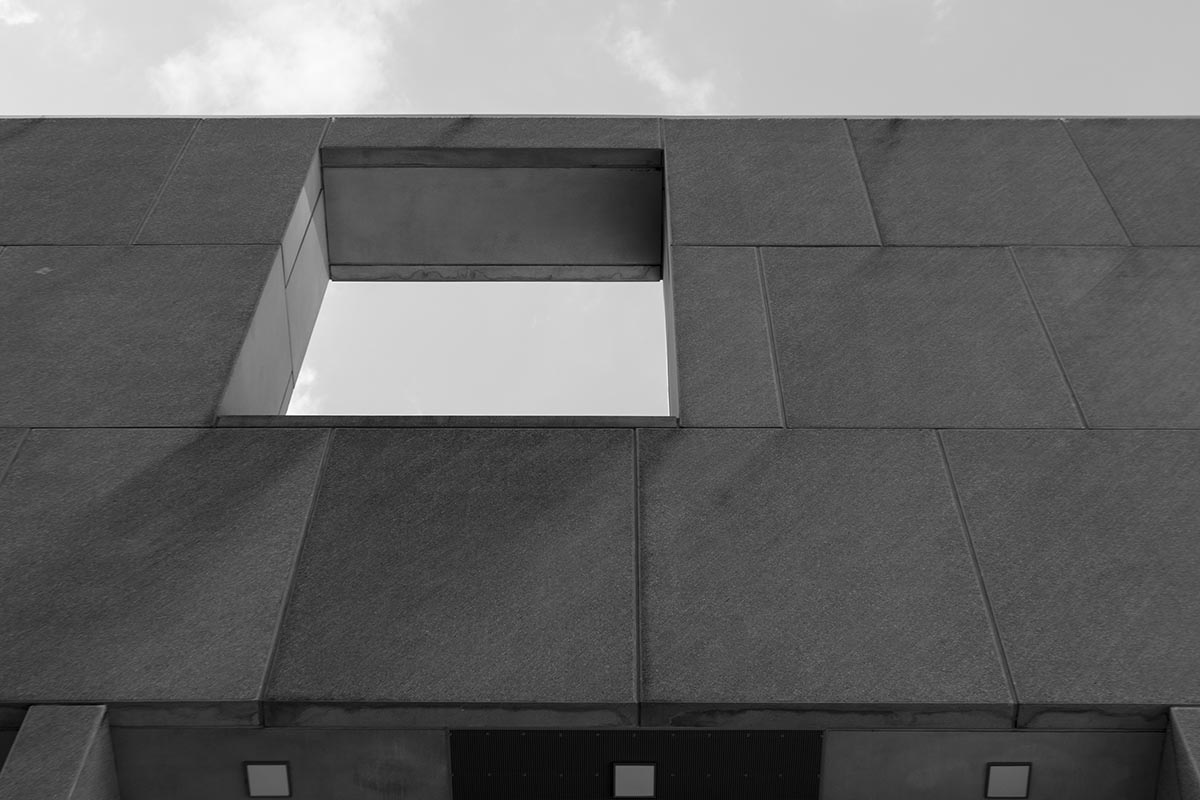
With some adjustments in Lightroom, this image of a portion of Atlanta's Central Library, a Brutalist design by architect Marcel Breuer and his last work, is complemented by a partly cloudy sky.

This bait shop image was photographed using the high dynamic range setting on the K-3 Mark III. Exposure 1/160 second at f/6.3, ISO 1600.
The camera itself was hefty when paired with the HD Pentax-DA 16-50mmF2.8ED PLM AW Star series lens I had on loan, but it’s well balanced. The grip is significantly deep, so I could comfortably and securely hold it at my side with four fingers. With this lens and the battery, the camera weighed in at 3.5 pounds, so I was most comfortable using it with a Spider Holster belt rather than a neck strap.
The Pentax K-3 Mark III Monochrome has a lot of features going for it. High among them is customization. On the top deck dial are five user preset options. These are more intuitive to use on the fly than custom functions that you’ve assigned to various buttons (which you can also do on this camera) or switching to custom presets through a menu selection.
You can customize capture and filter settings in the Custom section of the menu. To begin, choose from hard, standard, or soft as the Image Finishing Tone. You can go deeper and customize the parameters that define each of the finishing tones. The same sort of parameter tweaks can be done with the digital filters, giving you the ability to refine them to a look you like best. The digital filters include a base parameter, toy camera (with tones in red, green, blue, or yellow), retro (levels of blue or amber), high contrast, shading, invert color (a negative), tone expansion, grainy monochrome, miniature, soft, fish-eye, slim, and frame composite, and you can apply multiple filters to the same image. HDR capture options are also available, though filters cannot be applied to raw images captured using HDR.

Filters can be applied in-camera after the capture. The miniature filter applied to a cityscape creates a dreamy effect. I particularly like how the reflection of light from the building on the left makes it look as if the windows are floating in the sky.
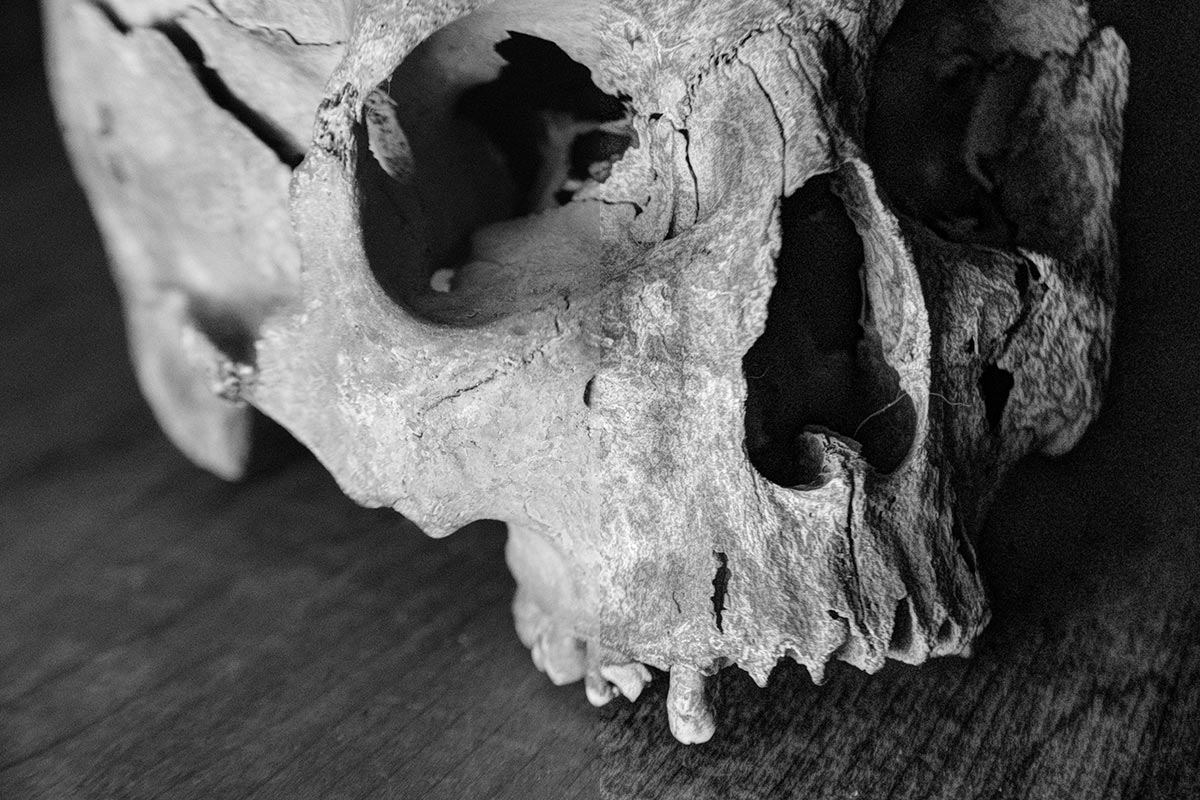
The tone expansion filter adds a sort of grunge texture to the image (right side) compared to the unfiltered version (left side).
Autofocus through the viewfinder uses phase-matching detection, while Live View uses contrast detection. The toggle on the back of the camera selects the AF point and can be moved up, down, left, right, and diagonally. It can also be used to manipulate the display area. The LCD monitor offers touch operation that can be set to focus and capture with a single touch on the area of the composition where you’d like the primary focus to be.
The camera’s raw format captures PEF or DNG files. At the time of this review, Adobe had not released a camera profile for the Pentax K-3 Mark III Monochrome for use with Adobe Camera Raw. ACR can be used to process files, of course, but you can also process raw files in camera or with the dedicated Image Sync app for iOS and Android. It’s surprisingly easy to apply adjustments in camera using the four-way controller, and you can change the image view from full image to the maximum zoom with one click of the rear e-dial instead of having to magnify four or five steps to see details. Image Sync can also be used as a remote control to set exposure and take images as well as sync images to a device via Bluetooth or wireless LAN connection.
The Pentax K-3 Mark III Monochrome comes with a wireless communication guide that’s fairly easy to follow and doesn’t require a burdensome number of steps to connect the camera to a device. Image access and editing is surprisingly fast once connected. If you want to transfer images to the device, you can do that automatically as you shoot or in batches, select a format for transfer, auto resize JPEGs to XS if you like, and continue image transfer after the camera is turned off.


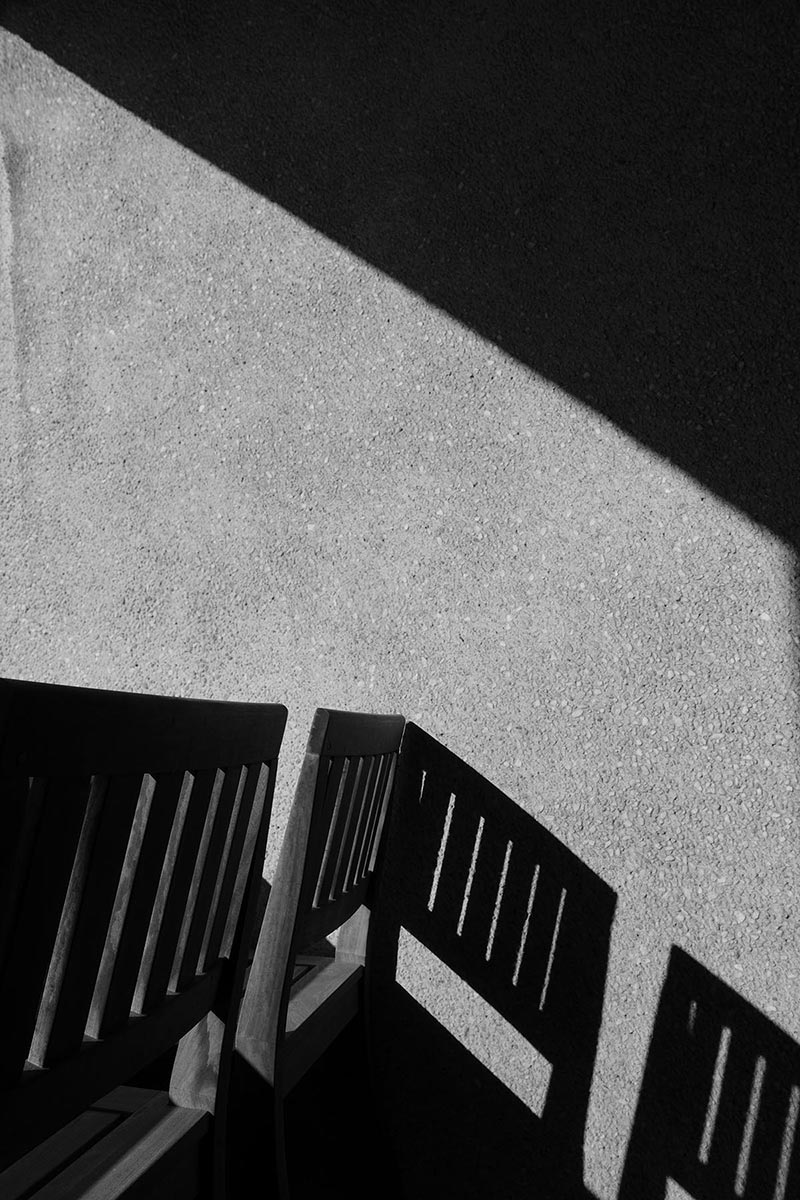
The in-camera image stabilizer is a 5-axis sensor-shake reduction SR II that delivers as much as five stops, and with a steady hand you can take handheld images as slow as 1/4 second. Without the chroma noise of color sensors, you can take advantage of ISO settings higher than you usually would. I took the camera to a park at night and got good results with the only light coming from streetlights a parking lot away. At ISO 25,600, the medium and darker tones have what looks more akin to a fine film grain than high ISO noise. The ISO tops out at ISO 1,600,000, but that’s more of a technical capability than an advisable setting.
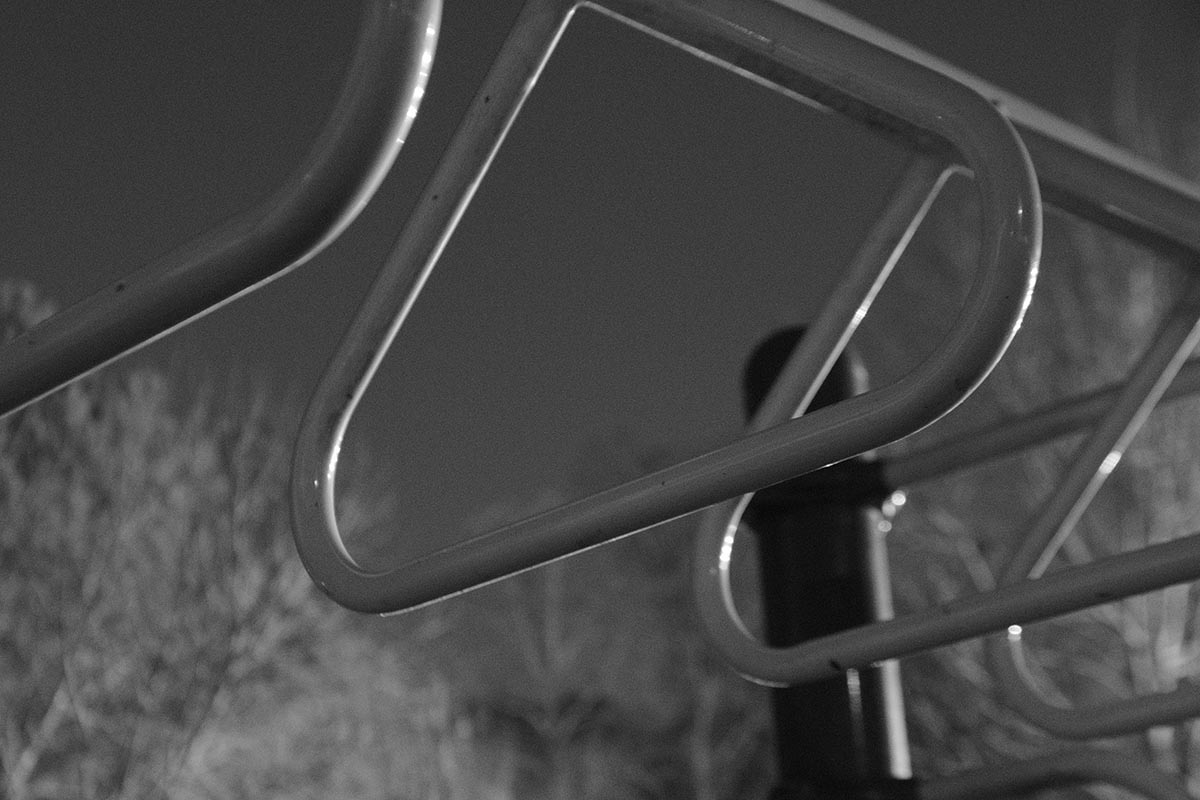
In an image taken at ISO 25,600, the grays are still smooth and creamy. The noise that does appear looks like a fine film grain.
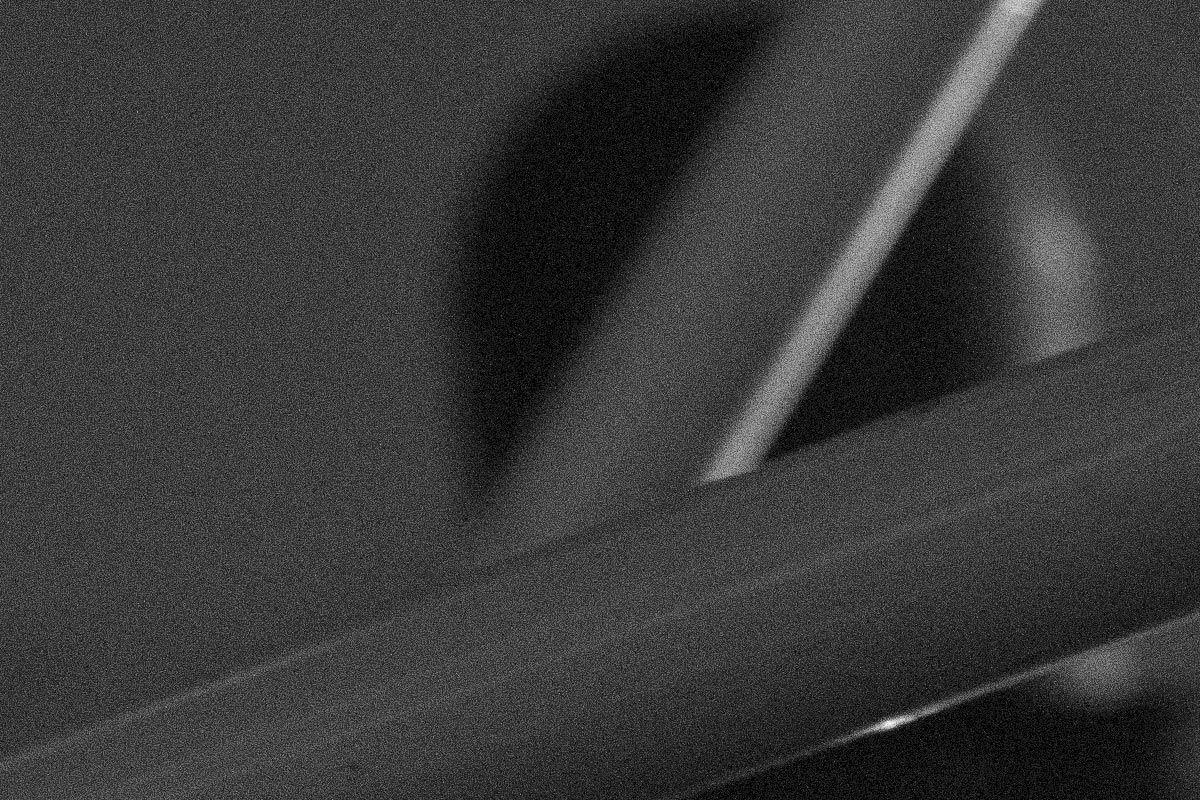
A closeup of the film grain look at ISO 25,600
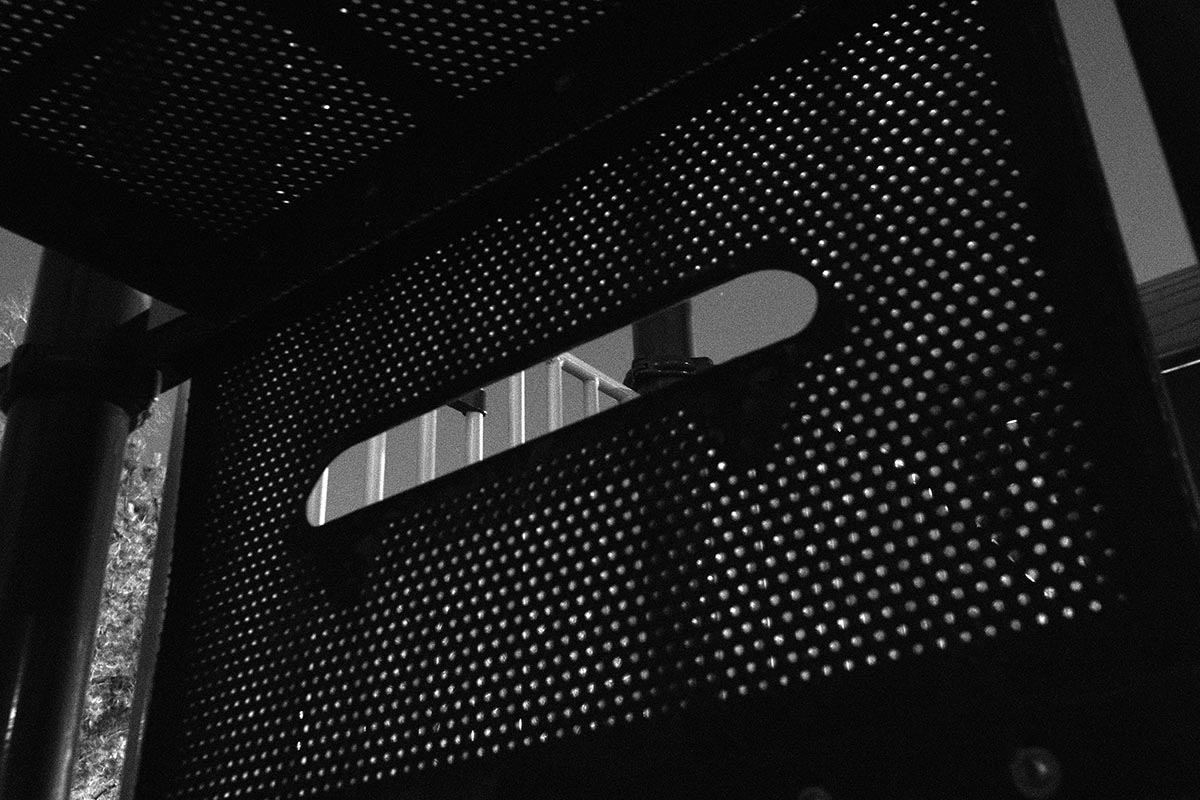
The in-camera image stabilizer is a 5-axis sensor-shake reduction SR II, which helps in taking night images at ISO 25,600. This exposure is 1/6 second at f/5.0, ISO 25,600.
For filmmakers, the Pentax K-3 Mark III Monochrome records in MPEG-4 AVC/H.264 in 4K (3840x2160) in 30p and 24p and FHD (1920x1080) in 60p, 30p, and 24p. It has external microphone and headphone jacks. Recording time is up to 4GB or 25 minutes and will automatically stop if the internal temperature gets high. The hard, standard, and soft imaging tones can be applied to video as well as retro, high-contrast, and invert color digital filters.
Overall, I found the user interface and physical button placement intuitive and comfortable. Autofocus is fast and responsive. The LCD touch focus and capture functioned without a hitch.
If you have an affinity for black-and-white and a desire to get your creative juices flowing and offer some standout images to clients, the Pentax K-3 Mark III Monochrome is an excellent investment at $2,199.95. The HD Pentax-DA 16-50mmF2.8ED PLM AW Star lens is priced at $1,399.95.
Joan Sherwood is a senior editor.


